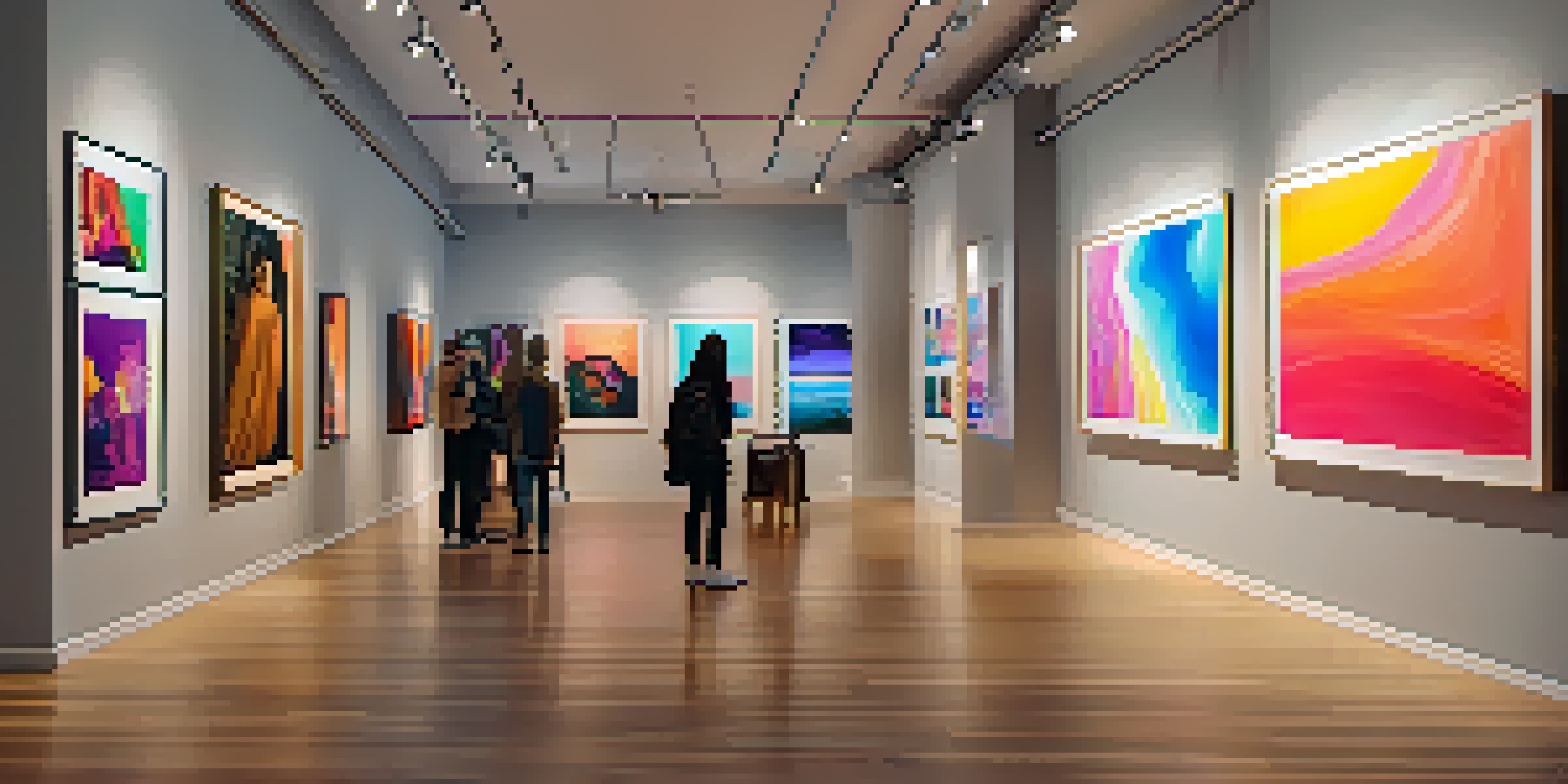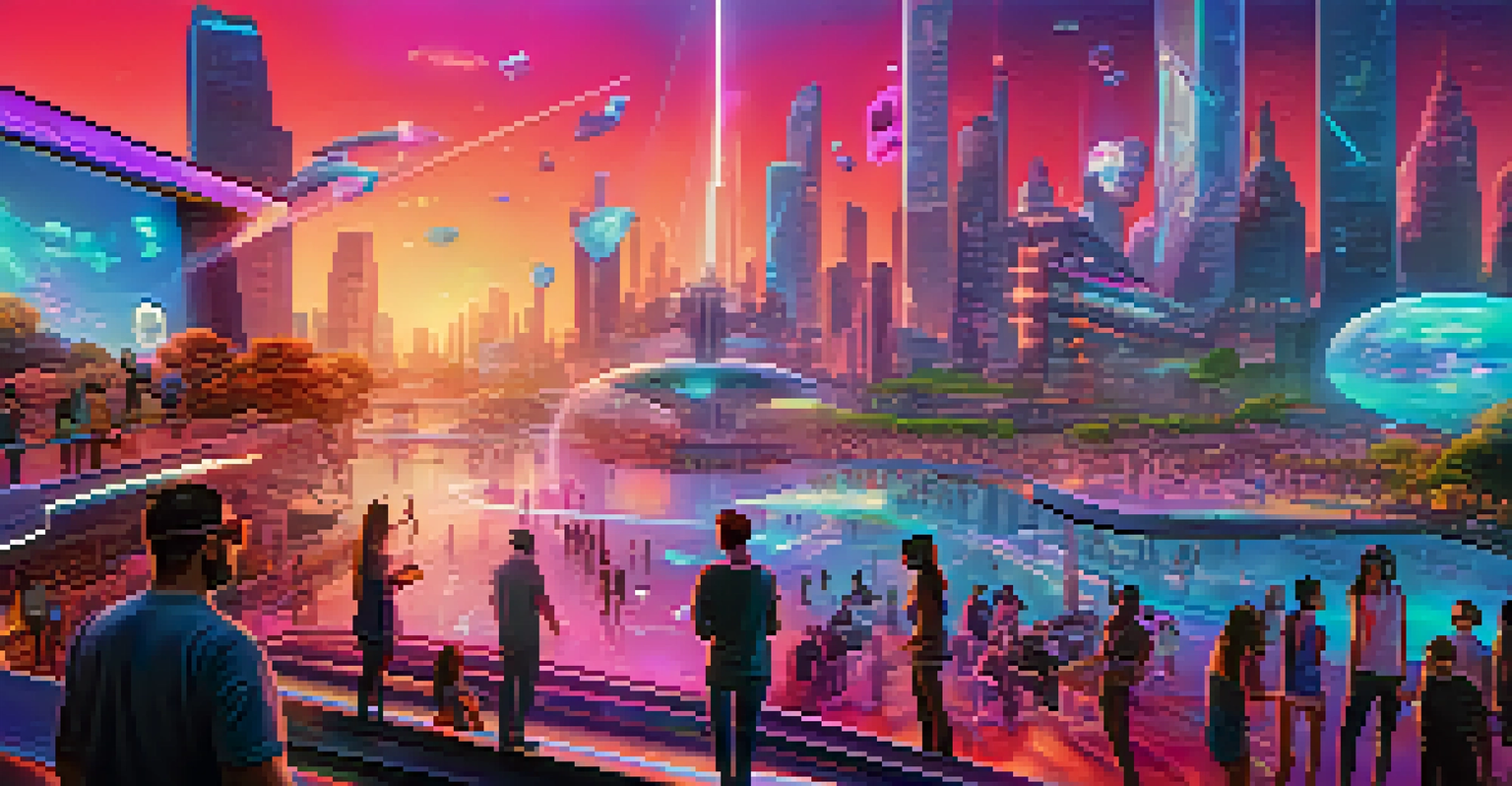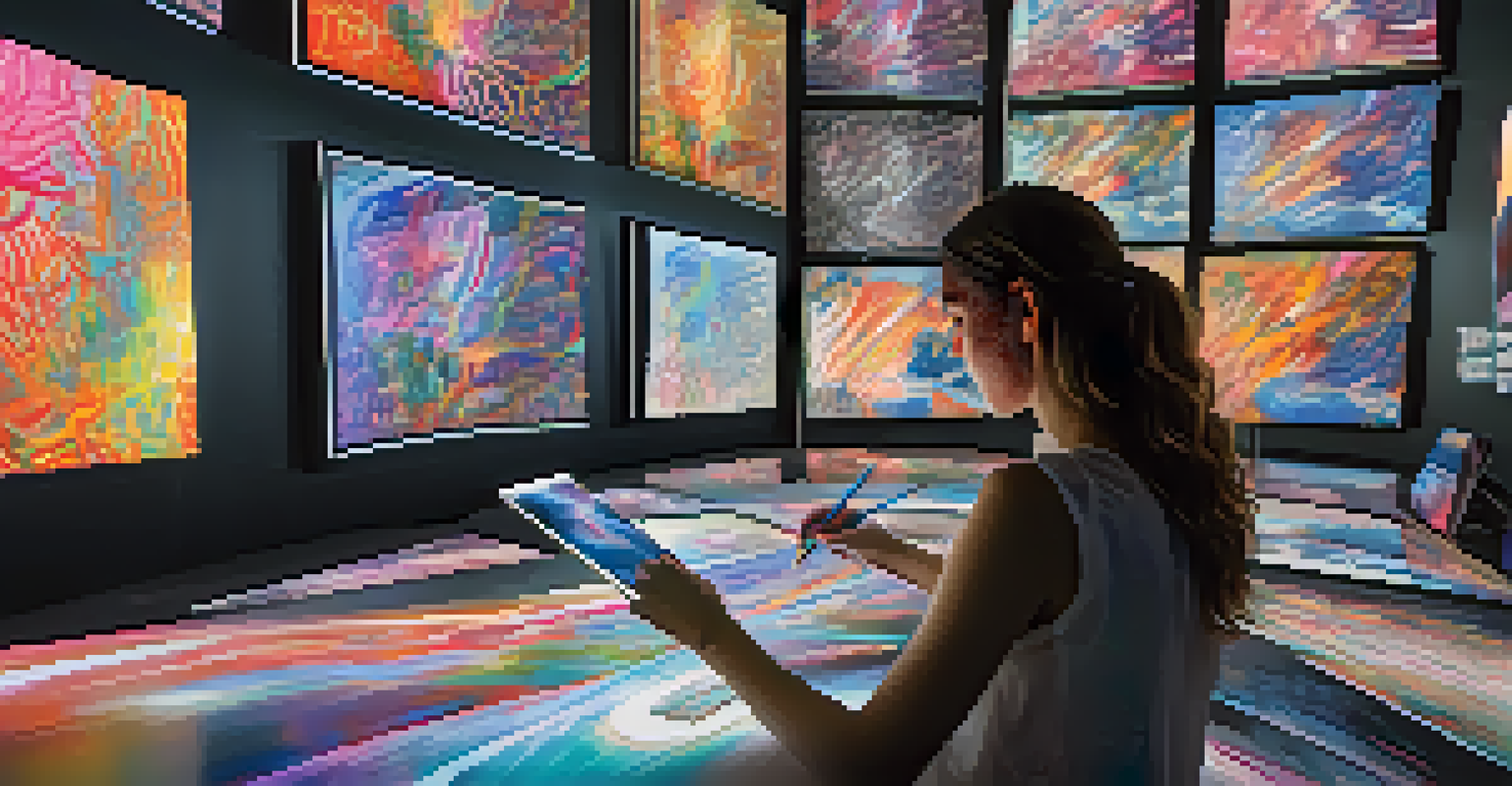Future Outlook for NFTs: Investment Trends to Watch

Understanding NFTs: A Brief Overview of Their Rise
Non-fungible tokens, or NFTs, have surged into the spotlight over the past few years. These digital assets represent ownership of unique items on the blockchain, making them different from cryptocurrencies like Bitcoin. The rise of NFTs has opened up new avenues for artists, musicians, and creators, allowing them to monetize their work in innovative ways.
NFTs are a way for artists to take back control over their work and earn a living from it.
For example, digital art sold as NFTs has fetched millions of dollars, capturing public interest and investment alike. This phenomenon has encouraged a broader acceptance of digital ownership, reshaping how we think about art and collectibles. As more people become aware of NFTs, their popularity is likely to continue growing.
Related Resource
However, while the excitement is palpable, it's essential to approach NFT investments with caution. The market is still relatively young, and volatility can lead to significant price fluctuations. Understanding the fundamentals will be vital for anyone looking to invest in this space.
Current Investment Trends in the NFT Market
As we dive into the current landscape, it's clear that several trends are shaping NFT investments. One significant trend is the increasing interest from traditional investors and institutions. Major brands and celebrities are entering the NFT space, which adds credibility and encourages more investors to explore these assets.

Additionally, the popularity of gaming NFTs is on the rise. Games that incorporate NFT elements allow players to own, trade, and sell in-game assets, creating a new economic model. This trend not only captivates gamers but also attracts investors looking for innovative projects with real-world applications.
NFTs Transform Art Ownership
NFTs empower artists by allowing direct access to global audiences and embedding royalties in contracts, reshaping the art market.
Moreover, the integration of NFTs with metaverse platforms is another trend to watch. As virtual worlds expand, owning digital property or assets within these environments becomes more appealing, driving demand for NFTs that represent these items.
The Role of Marketplaces in NFT Growth
NFT marketplaces play a pivotal role in the ecosystem, acting as platforms for buying, selling, and trading these assets. The rise of user-friendly marketplaces has made it easier for newcomers to navigate the NFT world. This accessibility is crucial for onboarding a broader audience and driving investment.
The future of art is digital, and NFTs are the key to unlocking its potential.
Popular marketplaces like OpenSea and Rarible have seen tremendous growth, showcasing a wide array of digital assets. These platforms not only facilitate transactions but also provide exposure for artists, helping them reach a global audience. As more marketplaces emerge, competition will likely lead to better services and lower fees.
Related Resource
However, potential investors should be aware of the risks associated with these platforms, including security concerns and the potential for scams. Conducting thorough research and due diligence is essential before making any purchases.
Emerging Technologies Enhancing NFTs
As technology continues to evolve, so do the possibilities for NFTs. Innovations such as augmented reality (AR) and virtual reality (VR) are enhancing the way we interact with digital assets. Imagine walking through a virtual gallery, experiencing art in a fully immersive environment—that's the future being crafted by tech advancements.
Blockchain technology is also advancing, with newer systems offering faster transaction speeds and lower energy consumption. This progress addresses some of the environmental concerns associated with NFTs, making them more appealing to eco-conscious investors. As these technologies mature, they will likely boost the NFT market's sustainability and growth.
Investment Trends in NFTs
The NFT market is seeing increased interest from traditional investors and a rise in gaming NFTs, indicating a shift in investment dynamics.
Furthermore, integrating artificial intelligence (AI) into NFTs can create unique experiences, such as generative art that evolves over time. These innovations will likely draw in a diverse range of investors, further expanding the market.
Regulatory Landscape: What to Expect
As NFTs gain traction, regulatory scrutiny is becoming more prominent. Governments worldwide are starting to consider how to classify and regulate these digital assets. The outcome of these discussions will significantly impact the future of NFT investments, as regulations can either foster growth or stifle innovation.
For instance, clarity around tax implications for NFT transactions will be essential for investors. Understanding how gains from NFT sales will be taxed can influence investment strategies and decisions. If regulations are too restrictive, they may deter new participants from entering the market.
Related Resource
On the flip side, a clear regulatory framework can enhance trust and legitimacy, attracting institutional investors. Balancing innovation with appropriate oversight will be crucial for the NFT market's long-term health.
The Intersection of Art and NFTs: A New Era
The relationship between art and NFTs is transforming the creative landscape. Artists can now reach global audiences directly, bypassing traditional gatekeepers such as galleries and auction houses. This democratization of art distribution empowers creators and offers investors unique opportunities to support emerging talent.
Moreover, the ability to embed royalties into NFT contracts ensures that artists continue to earn from their work every time it’s sold in the secondary market. This ongoing income stream is a game-changer, fostering a sustainable ecosystem for artists and collectors alike.
Regulatory Impact on NFTs
As governments examine NFT regulations, their outcome will significantly influence market growth and investor confidence.
As more artists embrace NFTs, we can expect a vibrant market filled with diverse works that challenge conventional notions of art ownership. This shift not only benefits artists but also allows collectors to invest in pieces that resonate with them on a personal level.
Future Predictions: Where NFTs are Headed
Looking ahead, several predictions can be made about the NFT space. First, we can expect continued growth in the market, driven by increased adoption and innovation. As more individuals and businesses recognize the potential of NFTs, they will undoubtedly play a significant role in various industries.
Another prediction is the rise of utility-based NFTs, which offer more than just ownership rights. These NFTs could provide access to exclusive events, content, or experiences, adding tangible value beyond mere collectibles. The integration of utility will likely attract a broader audience and enhance long-term investment potential.

Lastly, as sustainability becomes a priority across industries, eco-friendly NFTs will emerge as a significant trend. Investors will increasingly gravitate toward projects that prioritize environmental responsibility, shaping the future landscape of NFTs.